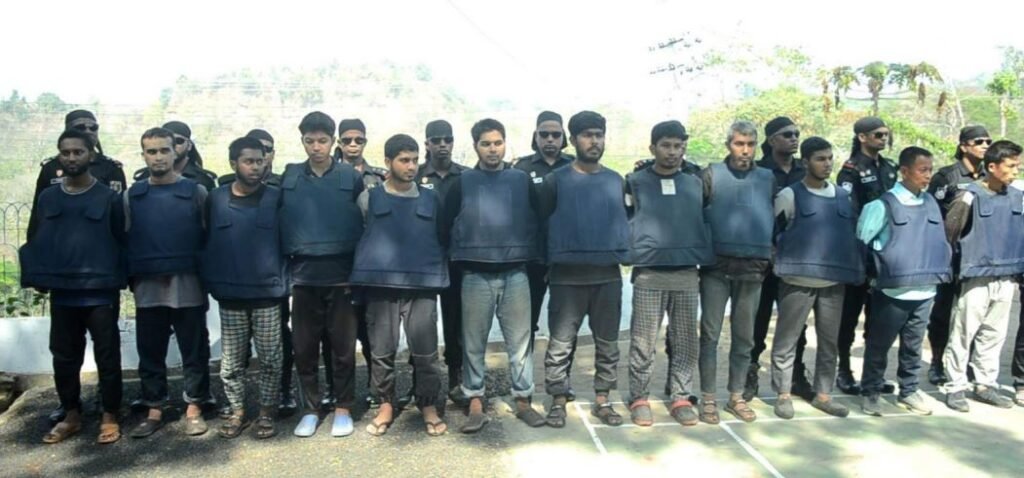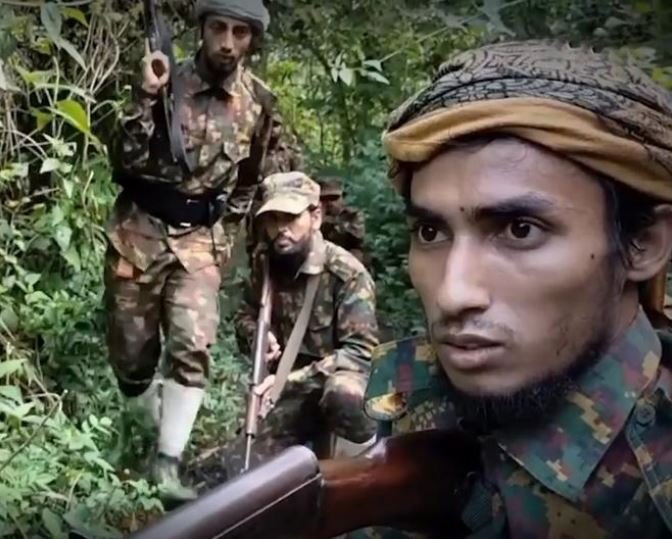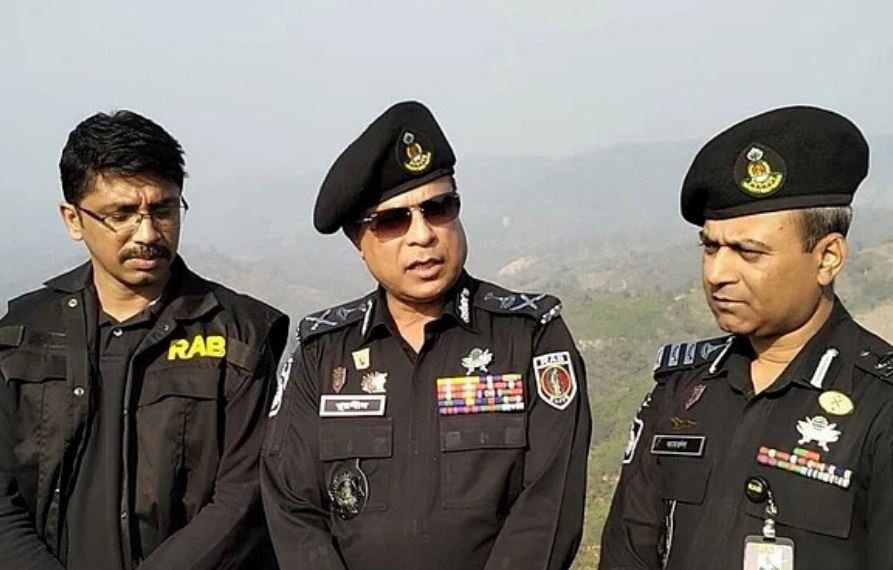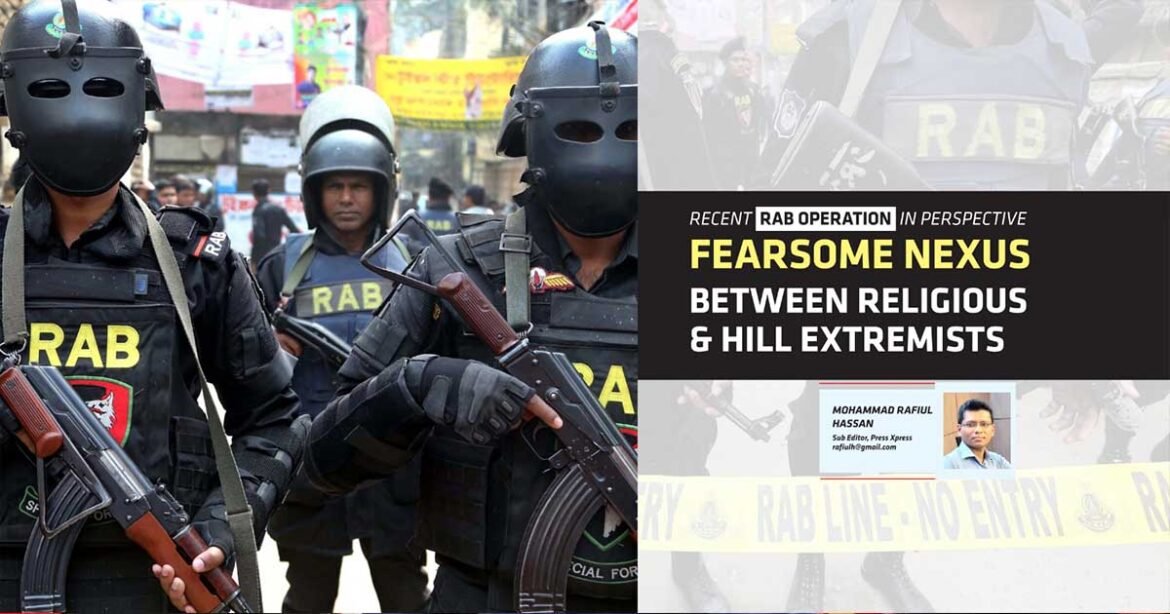Of late, there is a growing concern among the people of Bangladesh regarding the resurgence of militancy in the country. The disappearance of several young individuals and recent raids by law enforcement agencies in the hill areas, along with the arrest of suspected militants, have only added fuel to these fears.
In recent months, the Rapid Action Battalion (RAB) has taken into custody around 50 suspected militants from remote areas of the Chittagong Hill Tracts (CHT). Local law enforcement and intelligence sources said several armed organisations are operating in the hilly regions of Rangamati and Bandarban, including the Jana Sanghati Samity (JSS), United People’s Democratic Front (UPDF), Mog Democratic Party, and the latest addition, the Kuki-Chin National Front (KNF).
You Can Also Read: RAB ARRESTS “HIZB UT TAHRIR” LEADER FROM DHAKA
According to these sources, a new religious extremist group called Jamatul Ansar Fil Hindal Sharqiya, with the help of the KNF, has become active in the restive CHT region. It is a rare nexus between the Islamic militants and the separatist groups that has triggered significant concerns about the country’s security, which prompted the law enforcers to launch a series of operations in the CHT. The question that arises now is: why a religious extremist organisation has taken refuge in the hills, which has come to fore for the first time ever.
Security analysts said the anti-militant operations conducted by law enforcement agencies in recent years have been successful in eliminating criminals’ hideouts in different parts of the country.
“Due to the raids and intelligence activities, it has become difficult for militants to operate in the plains.”
Major General (Retd) Abdur Rashid
Security and strategy analyst

However, the hills provide a different story. Militants see the hills as a relatively safe place to establish their training and bases as those are difficult to access and offer ample opportunities for concealment. The hills provide a safe place to store weapons and they also receive support and cooperation from local separatist groups. This is why, they have chosen the hills as a safe haven. But this will not be the case for much longer, as the country’s security forces are making moves to eradicate their presence in these areas.
JAMATUL ANSAR – THE NEW RELIGIOUS EXTREMIST GROUP
A recently established militant organisation, Jamatul Ansar Fil Hindal Sharqiya first came to limelight in the middle of last year – following the disappearance of eight youths in Cumilla Sadar area. Sources in the law enforcement agencies said that some members of the banned militant outfits Harkatul Jihad, Jamatul Mujahideen Bangladesh (JMB), and Ansar Al Islam started forming the group in 2017. They started operating under the name Jamatul Ansar Fil Hindal Sharqiya back in 2019.
The organisation managed to misguide youths from different segments of the society. It is currently being led by its amir Anisur Rahman alias Mahmud. This new militant outfit has chosen the remote areas in Bandarban and Rangamati to conduct secret trainings on armed fight and weapon handling.

KUKI-CHIN NATIONAL ARMY – THE HILL EXTREMISTS
At the start of the last year, name of a new armed organisation known as the Kuki-Chin National Army (KNF) was heard in the hills. The KNF is a relatively new group based in the hills and primarily consists of members from the Bawm ethnic community, which is also known as the “Bawm Party” among hilly people. The organisation claims to represent six ethnic groups – Bawm, Pankhwa, Lusai, Khiang, Mro and Khumi.
As the founder of KNF, the name of Nathan Bawm of Ruma Upazila under Bandarban has appeared in the media. He was once a student of the Fine Arts at Dhaka University. KNF in various statements circulated on social media claimed that they formed an armed group, including a commando team known as ‘Head Hunter Commando Team.’ According to KNF, hundreds of its members underwent guerrilla trainings in Myanmar’s Kachin province three years ago. In 2021, a trained team returned from Myanmar and went into hiding last year.
While the Bangladesh government and law enforcement agencies have labelled the KNF as a separatist organisation, the group denies this claim on its Facebook page and presents itself as the representative of underprivileged and backward communities in the CHT. The group said, it does not want independence but demands an autonomous region with the name of “Kuki-Chin State” comprising the ethnic community they represent.
HOW JAMATUL ANSAR JOINED HANDS WITH KNF?
Recently, the question of how the relationship between the members of a radical group with Al-Qaeda ideology and a minority ethnic group developed has come to the fore. It is reported that Jamatul Ansar’s amir Anisur Rahman alias Mahmud contacted Nathan Bawm, the founder of the KNF armed organization, in 2021. Jamatul Ansar’s strategic goal was to provide training to its members and establish a safe shelter in the CHT, for which the cooperation of a hill group was necessary. This resulted in signing an agreement between the two extremist groups in 2021. According to the deal, Jamatul Ansar would receive training from the KNF until 2023. In return, they will pay KNF three lakh taka per month. Also, the extremist group agreed to bear the food expenses for KNF’s members.
It is known that the leaders of Jamatul Ansar were interested in working with ‘Bawm Party’ mainly out of religious faithfulness. The militant leaders justified this by citing a historical example from the history books of Islamic era when the Muslims took shelter and training under a Christian king of Abyssinia named Najjasi. Since the Bawm people of the CHT are Christians, the militant leaders saw it as permissible to seek refuge from them.

On the other hand, the question of why the KNF would provide shelter to a religious group has also arisen in public minds. The sources, however, said that the KNF is profited by the religious extremists’ money and manpower. KNF considers CHT’s Jana Sanhati Samity (JSS) as its rival in the hills and there had been several conflicts between the two groups. The organisation’s chief Nathan Bawm believed if the religious militant group was given shelter, they would also fight alongside the KNF against their common opponents. In June 2022, a member of Jamatul Ansar, Mohammad Abdur Rahman alias Zaheer (33), was killed in an encounter while fighting for the KNF, which further strengthened the loyalty of Jamatul Ansar to the KNF. The separatist organisation, KNF, has around 200 armed members, and with the addition of the Jamatul Ansar militants, the organisation became even stronger.
MILITANT TRAININGS IN KNF CAMPS
Jamatul Ansar attracts young people and keeps its handpicked youths in small groups under the custody of senior members. The houses where they are kept are called ‘Ansar House’. After providing some basic trainings, they are then sent to the KNF camp for militant training. The types of training that are given in the camp include firing firearms, ambush, and making bombs. The aim of the training was to carry out criminal attacks in different parts of the country.
It was said in a RAB press conference that 55 young people from 19 districts of the country left their homes in the name of ‘Hijrat’ to join the new extremist group Jamatul Ansar and many of these youths could be found in the remote CHT training camps of KNF. So far 55 people belonging to Jamatul Ansar have received training in three batches at the KNF camp. Some of the trainees were already arrested by the RAB. The extremist group also bought some weapons from the separatist organisation, disclosed the security sources. Among them are 15 AK-22 rifles and shotguns. Each weapon has a code number or mark on it for identification. Some videos are found on the social media where KNF and Jamatul Ansar members are seen receiving training in the remote hilly areas. It is known that the military clothes they wear in the training are made by militants themselves. They have two tailors in their team. One has been identified as Md. Didar from Cumilla. Having been confirmed of their training activities, law-and-order forces have been carrying out operations since the middle of last year targeting the camps in CHT.

RAB OPERATIONS IN THE HILL TRACTS
Eight youths from Cumilla went into hiding in August last year in the name of Hijrat. During the search for them, RAB came to know about the country’s new militant outfit Jamatul Ansar Fil Hindal Sharqiya in mid-September when several individuals were arrested in connection with this group. Based on the information of those arrested, RAB confirmed the group’s hideout in the restive hilly region and started operations in the remote CHT areas since October last. To assist operations, the local administration imposed an indefinite travel ban on tourists in Ruma and Thanchi upazilas of Bandarban from October 18. RAB and the military force held 10 individuals and recovered a large cache of weapons and equipment in a joint drive at the militant hideouts in October. The arrested individuals included seven members from Jamatul Ansar and three members from KNF. In the operation, a camp of militants was also destroyed.
In the wake of the coordinated operations, militants were shifting their camps in the hills. Later, RAB identified some more hideouts of the militants on the basis of intelligence information and arrested five Jamatul Ansar members on January 11 this year. Through this operation, four of the eight ‘missing’ people from Cumilla were arrested and brought under the law. Based on the information provided by the militants, RAB and the army jointly raided a secret camp of militants in an isolated area of Ruma in Bandarban on January 15. It was located in Luangmualpara, about 50km from Ruma Upazila Sadar. The place was at a mountain gorge of about 1500 feet deep surrounded by dense forest.

The operation lasted for about five hours. Several high officials were present while conducting the operation. The law and order forces destroyed the criminals’ hideout completely during the operation. The forces recovered five rounds of bullets and equipment from there. RAB Spokesperson Khandaker Al Moin said, ‘Militants and KNF have been carrying out various criminal activities in the fortified areas for long. In the meantime, the militants left the scene following the joint forces’ operation, due to which the local residents regained some relief.’ Following this operation, several members of Jamatul Ansar and KNF were arrested in a number of raids in the months of January and February.
On January 23, RAB 15 raided Rohingya camp-7 at Kutupalong in Cox’s Bazar based on intelligence information. ASP of RAB-15, Abu Salam Chowdhury, confirmed that RAB launched an operation early in the morning based on secret information. At that time, there was an exchange of fire between the RAB and the militants. At one stage, RAB arrested Jamatul Ansar’s head of military branch in Sylhet, Ranbir and his associate Abul Bashar, a bomb expert, with weapons from the shelter of a Rohingya camp. Bashar told RAB that he got separated from his group and left the hill to meet Ranbir after the law enforcers’ joint operation began in October last. From there, the two of them came to Kutupalong Rohingya camp-7 and hid themselves a few days ago.
Meanwhile, law enforcement forces on February 7 arrested 17 militants and 3 KNF members in a raid in Thanchi of Bandarban. Seven lakh taka, weapons and ammunitions were seized from the extremists. Eight members of the RAB were also injured in this operation. In total, 29 militants and 17 KNF members were arrested in the all-important operations of law enforcement agencies from early October 2022 to mid-February 2023.
The RAB Spokesperson said there may be more militants in the hills beyond the listed 55 militants who went to KNF training camps in the name of ‘Hijrat’ from various places including Cumilla. Of the 55 people on the list, all underwent training in the hilly areas as members of the military wing of the extremist group. In this context, he said,
“Our operation is against the criminals. We are conducting operation keeping in mind that there is no harm to the peaceful people of the hill areas and it is difficult to say when the drives will be completed.”
As closing note, it can be said that the people of Bangladesh are peaceful and they hate militancy or extremism in any format. Analysing the course of events in the past, it is observed that militancy mainly rises during political unrest. Besides, this makes their presence known when international crime or extremism are on the rise. However, Bangladesh’s law and order forces have always been seen to be active in preventing any form of extremism. In fact, there is no doubt that Bangladesh is playing a leading role in checking radicalism. It is now crucial that the government continues its efforts to combat extremism and eliminate its root causes. The ongoing operation in the CHT will enhance the reputation of the security forces and surely contribute to the overall stability and security of the country.


